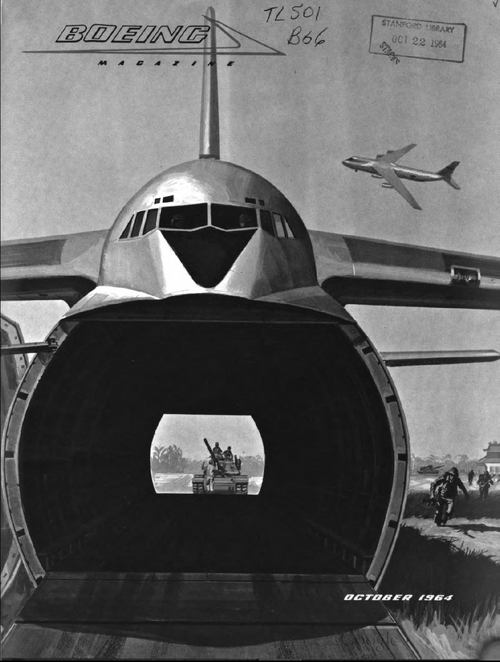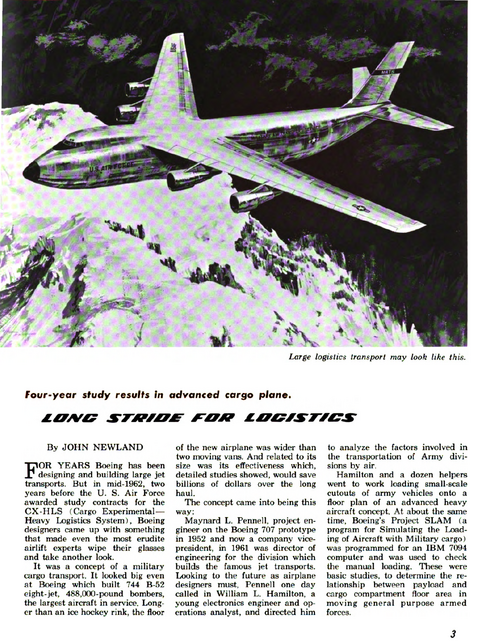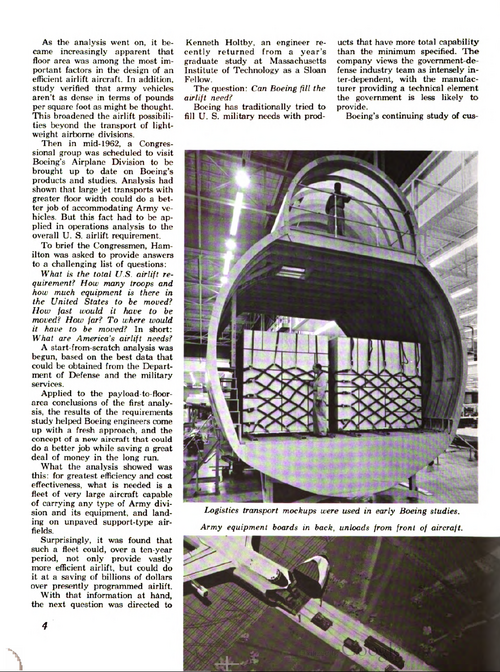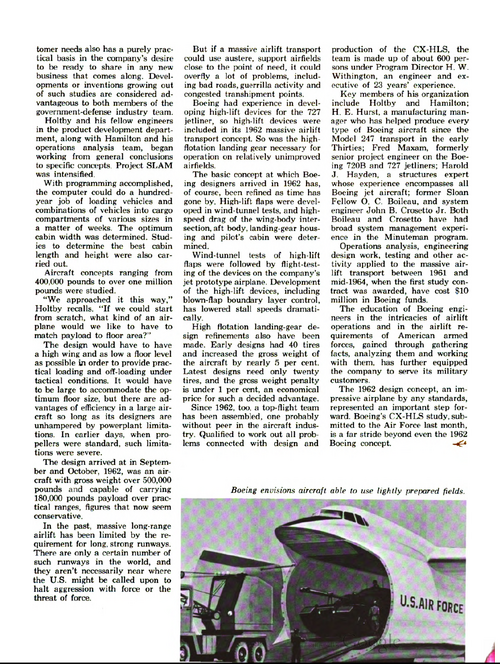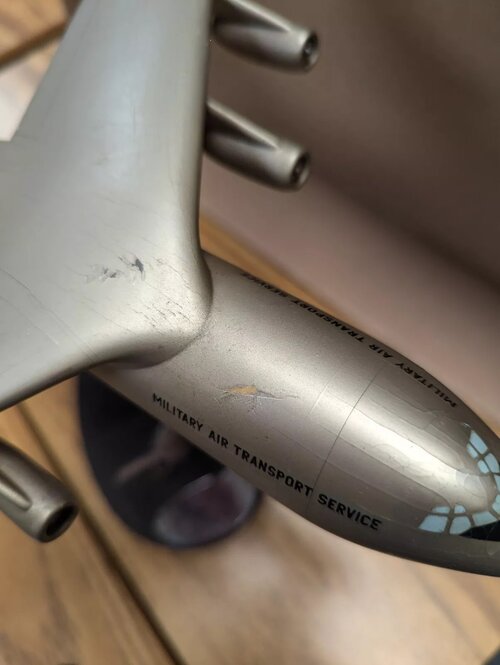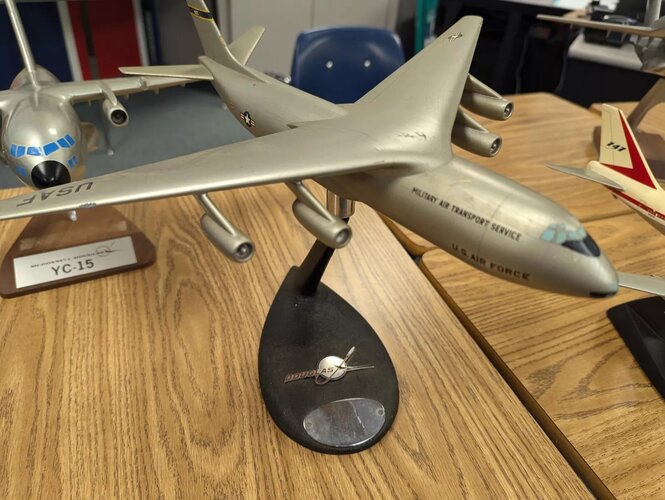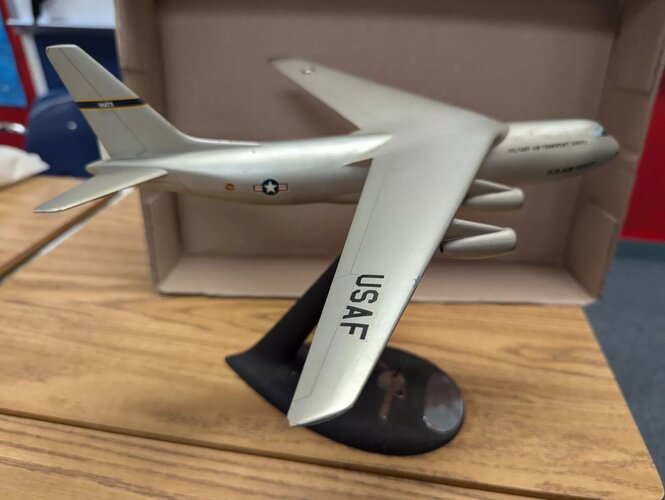- Joined
- 26 May 2006
- Messages
- 34,867
- Reaction score
- 15,729
You are bidding on an original press photo from 1964 featuring Artist's Concept of Boeing Transport Design The Boeing Co's bid to develop and produce the proposed CX-HLS heavy transport for their Air Force is based on company-funded studies beginning in late 1961, Boeing Magazine reported yesterday. Boeing is one of three major aerospace firms engaged in competition to design the CX-HLS (Cargo, Experimental, Heavy Logistics System.) The other contenders are the Lockheed Aircraft Corp. and a team headed by the Douglas Aircraft Co. Operations analysis, engineering design, testing a n d other work applied to the transport concept between 1961 and mid-1964, when the first study contract was awarded, have cost $10 million in Boeing funds, the company said. Boeing noted that in late 1961 its operations analysts carried out a study of the factors involved in the transportation of Army divisions by air. Studies in early 1962 made use of electronic computers to "load" all types of Army vehicles, including tanks a n d other heavy fire1964-10-20T14:02:33+05:30go compartment of various sizes. The purpose of this exercise was to determine the best fuselage size for maximum aircraft efficiency. Boeing Engineers later studied transport aircraft ranging from 400,000 pounds gross weight to more than 1 million pounds. Additional studies were made to determine which design would provide maximum cost effectiveness. Boeing studies showed a fleet of large logistics transports, such as the type studied, not only would provide vastly more efficient air lift but would do so over a ten-year period at a saving of "billions of dollars over presently programmed air lift." The basic concept for a CX-type transport has been substantially improved and re-fined by the company. At the moment, Boeing has a team of about 600 employes assigned to the CX-HLS project. Head of the team is H. W. Withington, long-time Boeing engineering executive. . Photo is 8” x 10” in size.
URL:
From Boeing magazine 1964

